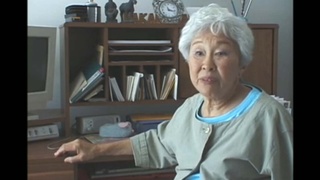Interviews
Joining WRA Photographic Section
First I worked in the community hospital, worked a little bit as an orderly there. And then there was a opening in the x-ray department and so they were asking groups around the hospital if they were interested in working in the x-ray department. And I figured this has a little bit of photographic possibilities there. So they hired me and I started to learn how to x-ray, you know, people. I worked there for oh, maybe half a year or so.
And during that time I became friends with the Heart Mountain Sentinel, the newspaper group, and one of them was Bill Hosokawa, and a fellow named Von Maaco, he was the director of the newspaper. And I was hanging around there a little bit.
And then one day a WRA photographer. Actually, there were two: Tom Parker and Charlie Mace, were up in Heart Mountain, in order to photograph different situations. And also, they told Von Maaco they were looking for someone to work in the photographic lab in Denver developing film. So they hired me and I moved from Heart Mountain to Denver. Where the WRA had their laboratory. And it was the only laboratory for WRA in the country. Not Washington DC, but in Denver. So I was hired as a darkroom technician.
Date: December 3, 2009
Location: California, US
Interviewer: John Esaki
Contributed by: Watase Media Arts Center, Japanese American National Museum






